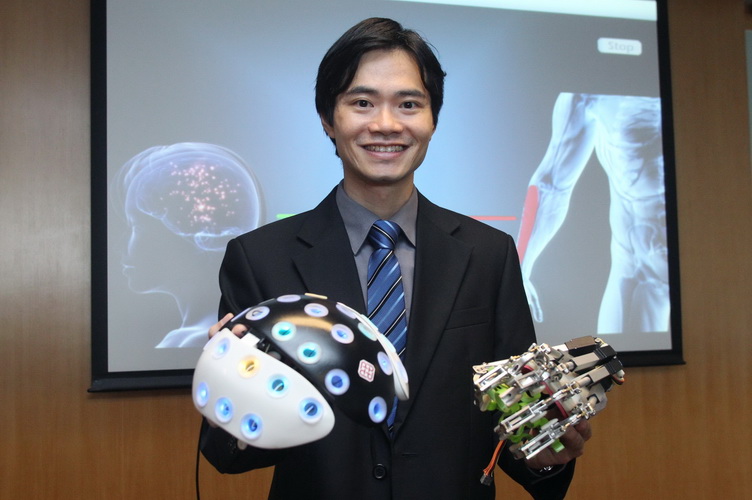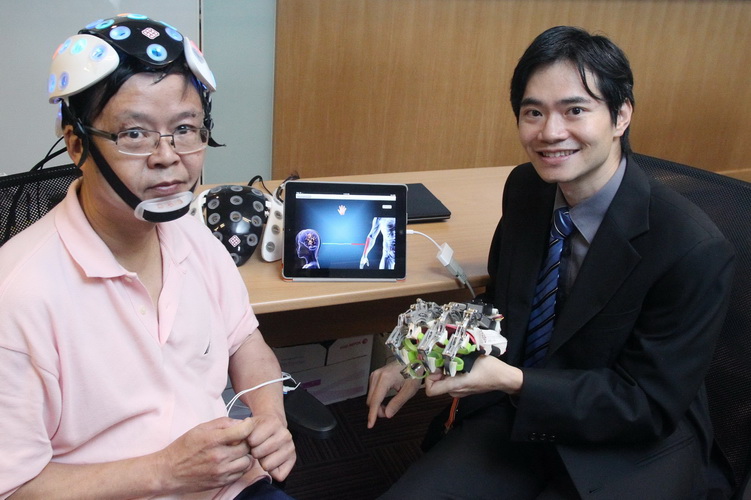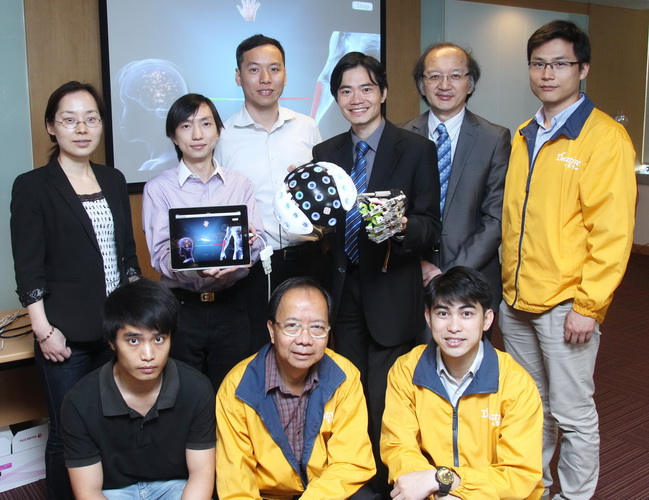The world's first Brain Training Device has given a ray of new hope to the recovery of survivors after stroke. Developed by researchers of The Hong Kong Polytechnic University (PolyU)'s Interdisciplinary Division of Biomedical Engineering (BME), this novel device which can detect brainwave, and thereby control the movement of paralyzed limbs, or go even further to control a robotic hand based on its sophisticated algorithm.
The research was led by Prof. Raymond Tong Kai-yu, Professor of PolyU's Interdisciplinary Division of Biomedical Engineering, who is also the Principal Investigator of the award-winning Exoskeleton Hand Robotic Training Device or the "Hand of Hope". His team members include the BME research team (Newmen Ho, Xiaoling Hu, Ching-hang Fong, Xinxin Lou, Lawrence Chong and Nathan Lam) and the Industrial Centre team of PolyU (Robert Tam, Bun Yu, Shu-to Ng and Peter Pang).
The latest breakthrough "Brain Training Device" can be coupled with the use of the "Hand of Hope" to achieve higher degree of recovery for stroke patients. While effective motor recovery after stroke depends on early rehabilitation program and intensive voluntary practice of the paretic limbs, current rehabilitation products have not use brainwave to guide the stroke survivors to identify voluntary intention and to relearn how to reconnect to their paralyzed limb again.
Prof. Raymond Tong and his team therefore developed the Brain Training Device with a new coherence algorithm for hand function training. The new algorithm is based on frequency coherence on surface electroencephalography (EEG, brainwave) and electromyography (EMG, muscle activities) to identify voluntary intention and their connection.
"The Brain Training Device is able to guide the stroke patients to relearn the reconnection between the brain and the limb, with a new design on the EEG headset and the EMG forearm brace to transmit data for controlling a hand robotic system interfaced by a telecare software platform using iPad app." Prof. Raymond Tong explained.
The patented Brain Training System, which looks like a helmet for cyclist and can read brainwaves, also has new features to find the specific EEG electrode locations for each individual stroke patient and reduce the number of EEG electrodes, which can reduce the system cost and the preparation time for brain training, added by Prof. Tong.
To find a minimal set of electrodes to control the device with accuracy higher than 90%, five chronic stroke patients were recruited to be trained for 20 sessions in the study. The researchers found that, in general, 32 electrodes are needed to maintain accuracy higher than 90%.
The high accuracy and low number of channels needed means that the Brain Training Device is a viable tool for assistive aid and rehabilitation training. The futuristic system will be made portable and easy-to-use at hospital and home settings.
PolyU researchers have already filed patents for this Brain Training Device in both the United States and China. This project is funded by the HKSAR Government's Innovation and Technology Fund (ITF). The findings of this brain control algorithm have been published as the cover story in top international journal IEEE Transactions on Neural Systems and Rehabilitation Engineering (2011.12).
*****


